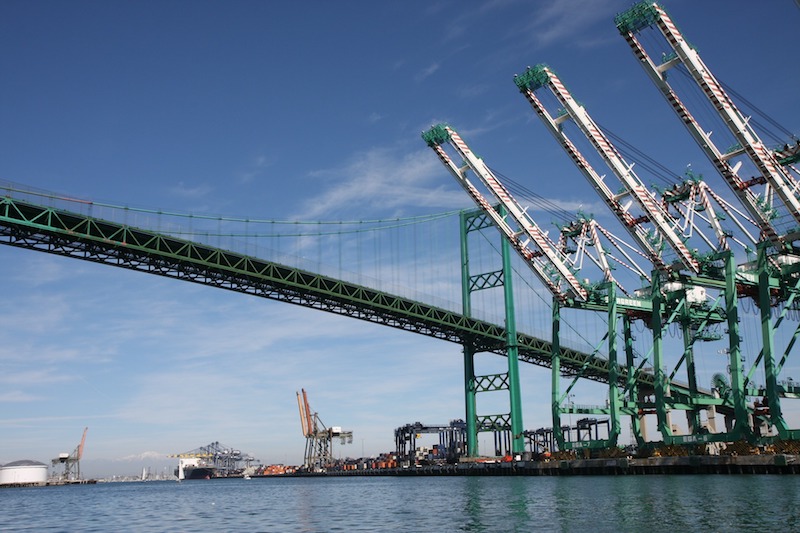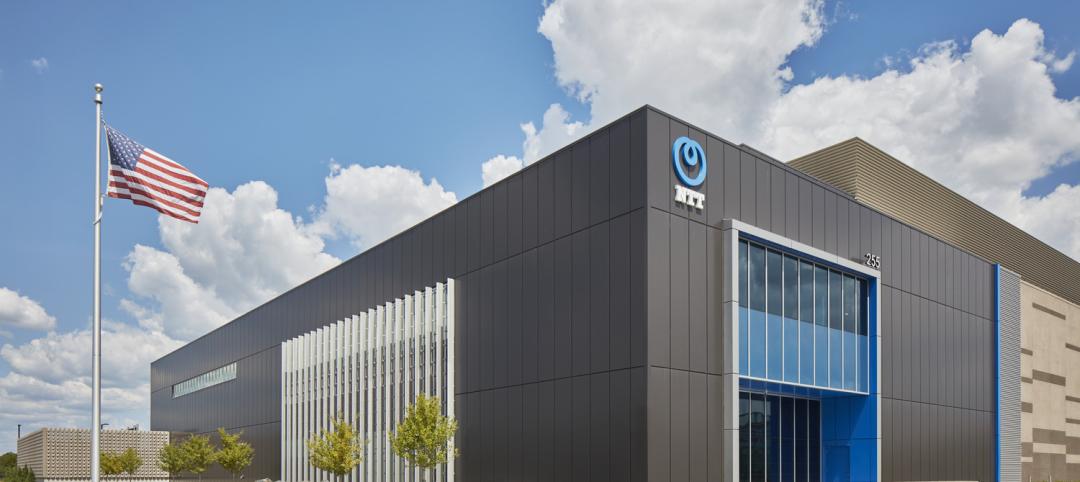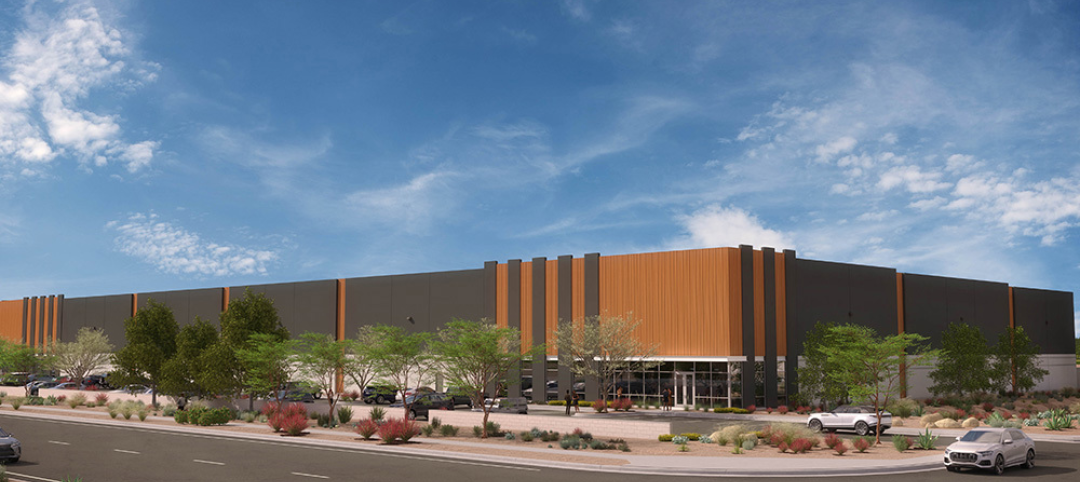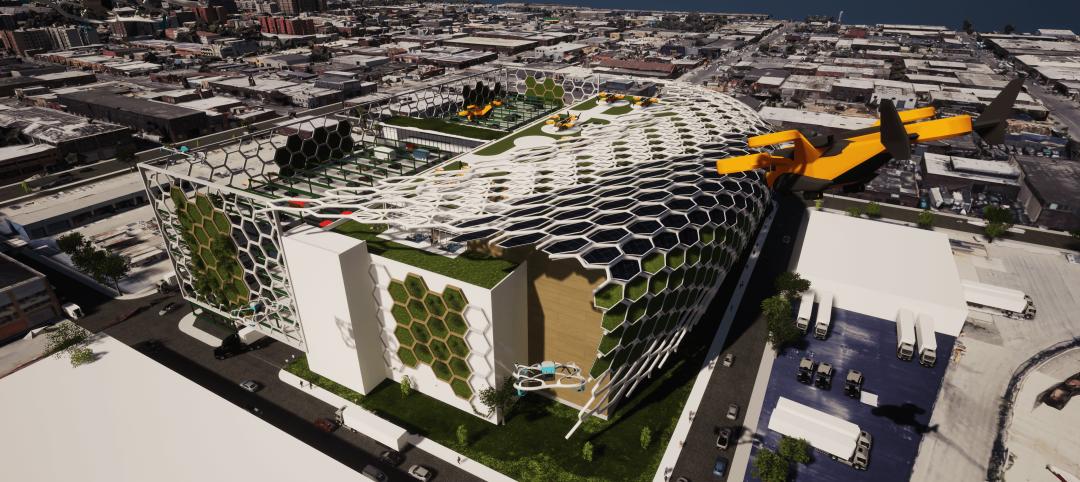The $5 billion Panama Canal expansion (Panamax) opened in late June 2016, making direct access of larger ships from China and elsewhere to America’s East Coast ports more expedient.
But well before that opening, three dominant U.S. ports were engaged in large-scale growth efforts to hold onto and increase their share of that anticipated container trade.
Ports of Los Angeles and Long Beach, Calif., and the Port of New York and New Jersey have spent the past two decades deepening channels, raising bridges, and investing in terminal automation and dockside infrastructure (see chart).
Since Panamax opened, the Port of Long Beach has completed a $1.3 billion Middle Harbor Terminal expansion; and the Port of Los Angeles—whose container volume peaked this year at 8.8 million Twenty-Foot Equivalent Units (TEUs)—completed a $500 million TraPac Container Terminal Expansion.
The Port of New York/New Jersey spent $2.1 billion to deepen its harbor to 50 feet. And by opening an elevated Bayonne Bridge, the largest container ships now have access to the Port of NY/NJ.
CLICK IMAGE TO ENLARGE
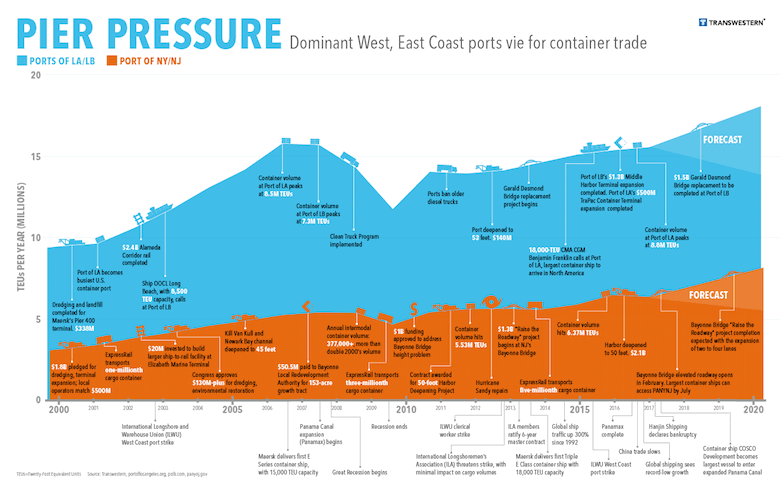 This chart shows the relationship between the development and construction actvities at America's three largest ports— Los Angeles, Long Beach and New York/New Jersey—and their increases in container volumes. Image: Transwestern.
This chart shows the relationship between the development and construction actvities at America's three largest ports— Los Angeles, Long Beach and New York/New Jersey—and their increases in container volumes. Image: Transwestern.
Despite predictions that the Panama Canal widening would disseminate some shipping away from major ports to an array of smaller markets on the Gulf and East Coasts, the ports of Los Angeles and Long Beach and Port of NY/NJ “have retained their stature as the dominant entry points for containerized merchandise and manufacturing components to be assembled domestically,” observe two executives from Transwestern, the national real estate firm.
In its recent edition of “Ask the Expert,” Transwestern’s Director of Research for New Jersey Matthew Dolly and Research Manager for Southern California Michael Soto point out that, as activity at these ports increases, rent rates have been rising, but still take a back seat to transportation costs and access to labor as factors determining where businesses select space.
Panamax has caused some shifts in where ships from Asia and elsewhere unload in the U.S. The Ports of Long Beach and Los Angeles, America’s two largest ports, once received half of all containerized goods entering the U.S. Last year they handled a combined 15.6 million TEUs, or just under one-third of national volume. The authors state that these ports’ combined volume is projected to increase by 3.9% annually through 2040.
The Port of NY/NJ recognized opportunities from increasing shipping travel through the Suez and Panama Canals. Last year, its annual volume peaked to 6.25 million TEUs, or 13% of U.S. volume, and became America’s third-largest port. The authors say that this port has been “catching up” to its West Coast competitors.
In general, busy ports are catalysts for industrial and commercial development around them. This is even truer now that several ports have positioned themselves to receive higher container volumes from giant ships.
About one-third of containerized cargo entering the L.A and Long Beach ports stays in the region to serve 20 million local consumers. And given New York and New Jersey’s population density, they are lucrative destinations for imported goods, many of which travel through the Suez Canal.
“As the world’s concentration of low-cost labor shifts from China to India and other markets bordering the Indian Ocean, the volume of goods passing through the Suez Canal to enter the U.S. via East Coast ports will likely increase,” the Transwestern authors write.
Warehouse and distribution spaces on both coasts are at a premium. And, say the authors, it appears that retailers and manufacturers seem willing to accept higher rents to be closer to those distribution points nearer the ports. “Developers must decide how far away from the region’s population center they can build before the distance makes a location impractical for distribution centers,” the authors write.
The ports in southern California and the New York metro region have committed to maintaining and improving their surrounding infrastructures to be able to handle the transportation of high cargo volumes. Last year, for example, New Jersey’s Transportation Trust Fund earmarked $400 million in annual funding for road, bridge and transit improvements.
In Southern California, major infrastructure improvements include the $1.5 billion replacement of the Gerald Desmond Bridge in Long Beach, to allow access to the port for the tallest container shops. The new bridge will have six lanes (two more than the existing span), as well as a bike lane and observation deck. It’s scheduled for completion next year, at which point it will span 8,800 feet.
Related Stories
Laboratories | Apr 12, 2024
Life science construction completions will peak this year, then drop off substantially
There will be a record amount of construction completions in the U.S. life science market in 2024, followed by a dramatic drop in 2025, according to CBRE. In 2024, 21.3 million sf of life science space will be completed in the 13 largest U.S. markets. That’s up from 13.9 million sf last year and 5.6 million sf in 2022.
Industrial Facilities | Apr 9, 2024
Confessions of a cold storage architect
Designing energy-efficient cold storage facilities that keep food safe and look beautiful takes special knowledge.
Data Centers | Feb 28, 2024
What’s next for data center design in 2024
Nuclear power, direct-to-chip liquid cooling, and data centers as learning destinations are among the emerging design trends in the data center sector, according to Scott Hays, Sector Leader, Sustainable Design, with HED.
Designers | Feb 23, 2024
Coverings releases top 2024 tile trends
In celebration of National Tile Day, Coverings, North America's leading tile and stone exhibition, has announced the top 10 tile trends for 2024.
MFPRO+ News | Feb 15, 2024
UL Solutions launches indoor environmental quality verification designation for building construction projects
UL Solutions recently launched UL Verified Healthy Building Mark for New Construction, an indoor environmental quality verification designation for building construction projects.
Industrial Facilities | Jan 29, 2024
How big-ticket, government-funded investments in industrial developments are affecting private construction companies
Large sums of money remain in bank accounts for government-funded programs like the CHIPS Act, the Infrastructure Investment and Jobs Act, and the Inflation Reduction Act. But with opportunities come challenges.
Self-Storage Facilities | Jan 25, 2024
One-quarter of self-storage renters are Millennials
Interest in self-storage has increased in over 75% of the top metros according to the latest StorageCafe survey of self-storage preferences. Today, Millennials make up 25% of all self-storage renters.
Industry Research | Jan 23, 2024
Leading economists forecast 4% growth in construction spending for nonresidential buildings in 2024
Spending on nonresidential buildings will see a modest 4% increase in 2024, after increasing by more than 20% last year according to The American Institute of Architects’ latest Consensus Construction Forecast. The pace will slow to just over 1% growth in 2025, a marked difference from the strong performance in 2023.
Industrial Facilities | Nov 14, 2023
Some AEC firms are plugging into EV charging market
Decentralized electrical distribution is broadening recharger installation to several building types.
Industrial Facilities | Nov 1, 2023
A new concept for multistory warehouses focuses on efficiency
Ware Malcomb’s design idea suggests drone delivery, automated stacked packing, and a sustainable building.


